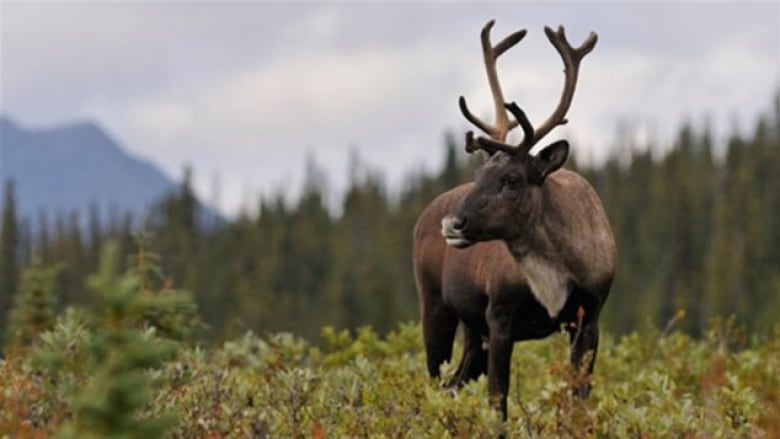Caribou breeding program aims to boost dwindling herd numbers in Alberta
More than $24 M dedicated to rebuild Jasper caribou population

A new $24million matchmaking program is aiming to help rebuild caribou populations in Jasper National Park that are too small to recover on their own.
The federal government announced Tuesday that itspreviously announced proposal to carry out a first-of-its-kind caribou conservation breeding program is going ahead.
"We've determined through that work over the last few years that using conservation breeding is the only tool available to Parks Canada and Jasper National Park to be able to recover these small herds," said Jean-Francois Bisaillon, program manager for the Caribou Recovery Program in Jasper, on Tuesday.
Parks Canada plans to capture females along with a small roster of bulls and breed them in captivity.
The hope is that each rutting season, nature will take its course inside the facility's breeding pens albeit with some human intervention.
"We would release the offspring every year in the herd or a population that we intend to increaseor recover over time and then we repeat that over a number of years until we meet our recovery objectives essentially," Bisaillon explained.
Caribou are what Bisaillon calls "an umbrella species," meaning by protecting caribou, other species in the same ecosystem also benefitsuch as grizzly bears and wolverines.
The project will permanently pen up to 40 females and five males in a one-square-kilometre facility surrounded by an electric fence.
Construction near Athabasca Falls, about 30 kilometres south of Jasper, will begin this spring. The first calves are expected to be born in the spring of 2025 and released into the Tonquin and Brazeau herds the following year.
'History of mismanagement'
Carolyn Campbell, conservation director with the Alberta Wilderness Association (AWA) said the caribou population has suffered from "a history of mismanagement," which Parks Canadastarted to correct in the early 2000s.
"They've refocused populations of wolves that were putting too much predation pressure on Caribou," Campbell explained.
"They've taken a lot of steps to reduce access pressures by humans and winter snowpack threats by people that enabled wolves to get into where the Caribou were."
Campbell said she understandstheprogram is a necessary measure to save the species, but she called thesituation"tragic."
Parks Canada has taken steps to help caribou populations, such as restricting public access to winter grazing grounds. Those changes came too late, Campbell said.
"It's tragic because it never should have come to this in a national park."
Parks Canada also said it worked with Indigenous communities in the area to consult on the project. Campbell said she strongly supports that part of the strategy .
"They have knowledge since time immemorial about Caribou and have been excluded from many important Parks Canada decisions," Campbell said.
It's hoped the captive breeding program will produce around 20 calves a year enough to bring the herds to sustainable levels within a decade.












_(720p).jpg)


 OFFICIAL HD MUSIC VIDEO.jpg)
.jpg)



























































































